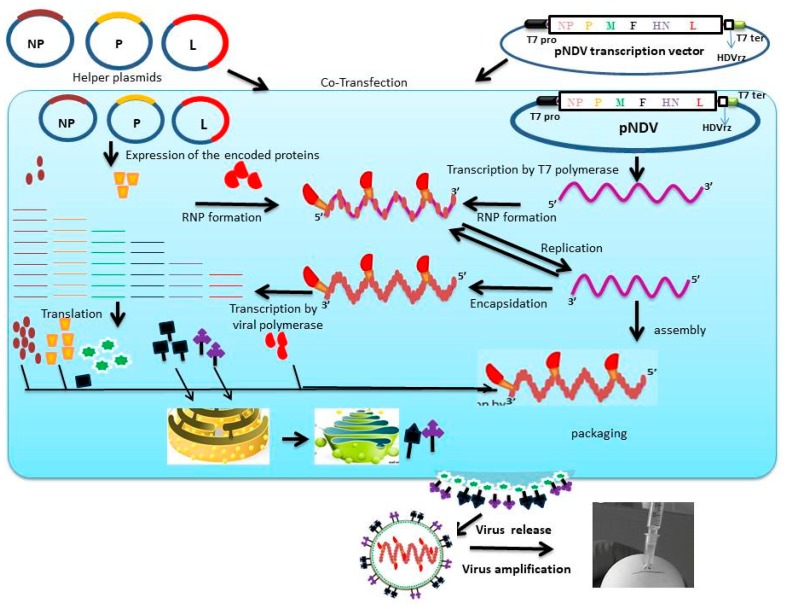Figure 1.
Reverse genetics approach for the generation of engineered Newcastle disease virus in BSR-T7 cells. Full length NDV antigenome flanked by T7 promoter (T7 pro), and autocatalytic hepatitis delta virus ribozyme (HDVrz) is cloned into the transcription vector to form pNDV. Helper plasmids (expression constructs for NP, P and L) are co-transfected with pNDV into BSR-T7 cells, which constitutively express T7 RNA polymerase. Within the cytoplasm, the T7 polymerase transcribes the viral RNA using the pNDV as a template. The helper plasmids express the encoded proteins for association with the transcribed RNA to form the ribonucleoprotein (RNP) template for onward replication cycles. The viral polymerase gradiently transcribes the viral genome into respective mRNAs, which are subsequently translated into proteins. NP, P and L proteins assemble with the newly synthesized negative sense viral RNA while the F and HN proteins are post-translationally modified in the endoplasmic reticulum and Golgi apparatus before being transported to the cell surface. The final event is the release of the recombinant virus by budding, which is then amplified in specific pathogen-free chicken embryonated eggs.

